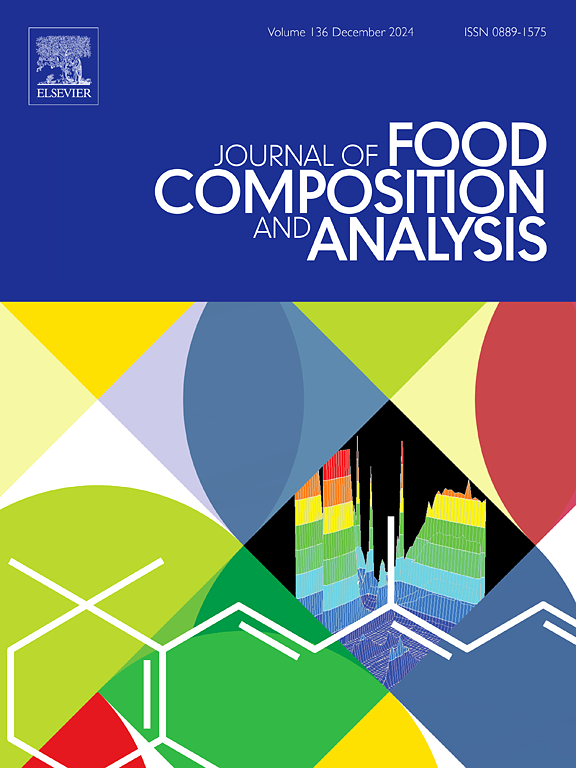Improving quality of tomato (Solanum lycopersicum L.) fruits for fresh consumption and processing with optimised boron application
IF 4
2区 农林科学
Q2 CHEMISTRY, APPLIED
引用次数: 0
Abstract
Tomato (Solanum lycopersicum L.), which is an excellent vegetable to provide important nutrients and antioxidants for human health benefits, is sensitive to boron (B). Influence of B application for improving physical attributes, proximate composition, antioxidants, and mineral composition of tomato, by synchronising B requirements of the crop is not reported yet. This study critically evaluated influence of five B application protocols with seven tomato genotypes on 28 fruit quality attributes and two important fruit quality indices. In-depth evaluation showed that B directly influenced fruit pericarp thickness, pH, phenol, Zn, Cu, and B content. Boron application (2.0 kg ha−1) to soil at planting plus foliar spray (0.125 kg ha−1) at pre-flowering stage of tomato was the best. It improved tomato fruit quality by improving physical attributes (6.1–33.1 %), proximate composition (7.8–49.0 %), antioxidants (16.7–207.5 %), and mineral nutrients (9.6–146.8 %) content of tomato fruit. This, in turn, led to an improvement in fruit quality indices for both fresh consumption and processing by about 31.0 %. Overall, the order of the genotypes in terms of their B responsiveness was Pusa Ruby > 2016/Res-3 > Pathar Kuchi > 2016/Res-6 > 2016/Res-5 > 2016/Res-1 > 2016/Res-4. Results of the study thus suggest that cultivation of the identified promising genotypes of tomato with optimised B application could produce superior fruit quality in intensively cultivated vegetable growing regions.
求助全文
约1分钟内获得全文
求助全文
来源期刊

Journal of Food Composition and Analysis
工程技术-食品科技
CiteScore
6.20
自引率
11.60%
发文量
601
审稿时长
53 days
期刊介绍:
The Journal of Food Composition and Analysis publishes manuscripts on scientific aspects of data on the chemical composition of human foods, with particular emphasis on actual data on composition of foods; analytical methods; studies on the manipulation, storage, distribution and use of food composition data; and studies on the statistics, use and distribution of such data and data systems. The Journal''s basis is nutrient composition, with increasing emphasis on bioactive non-nutrient and anti-nutrient components. Papers must provide sufficient description of the food samples, analytical methods, quality control procedures and statistical treatments of the data to permit the end users of the food composition data to evaluate the appropriateness of such data in their projects.
The Journal does not publish papers on: microbiological compounds; sensory quality; aromatics/volatiles in food and wine; essential oils; organoleptic characteristics of food; physical properties; or clinical papers and pharmacology-related papers.
 求助内容:
求助内容: 应助结果提醒方式:
应助结果提醒方式:


